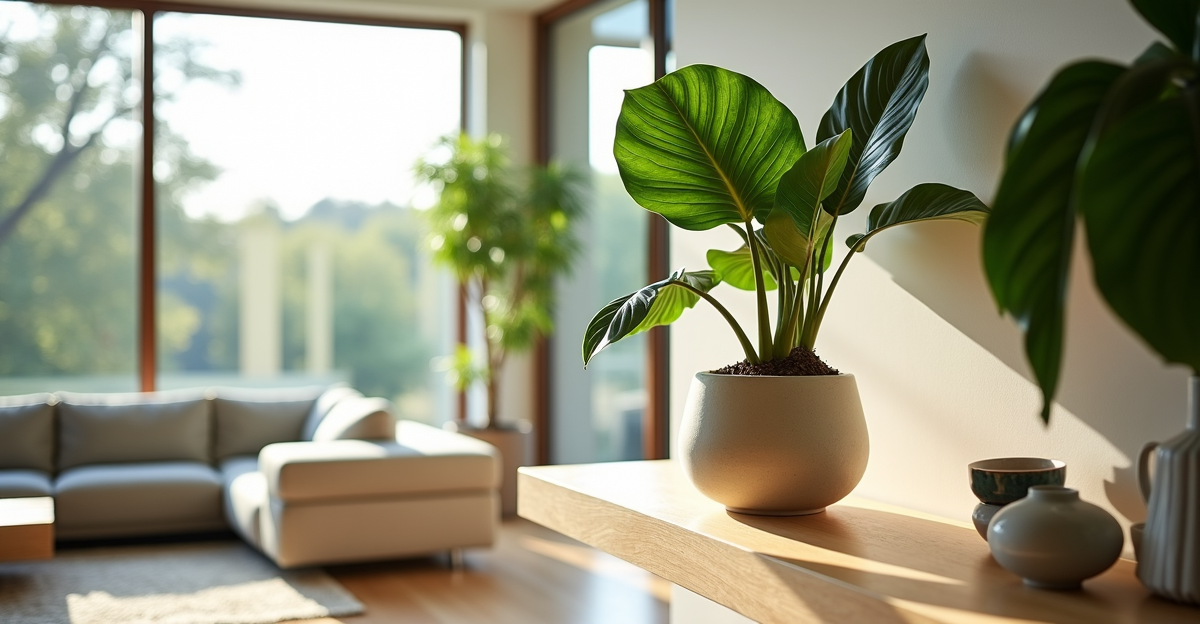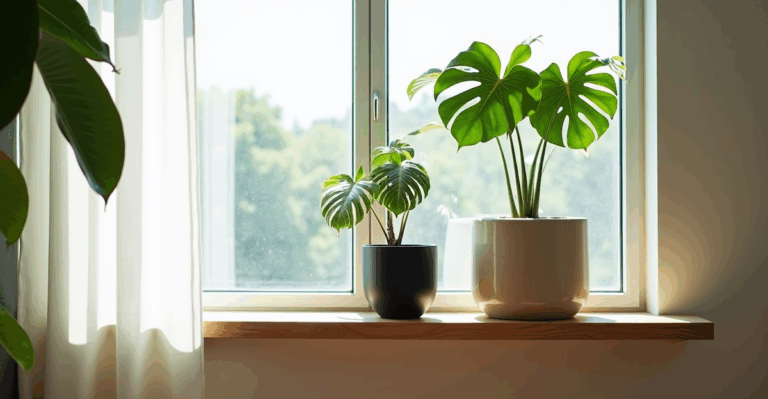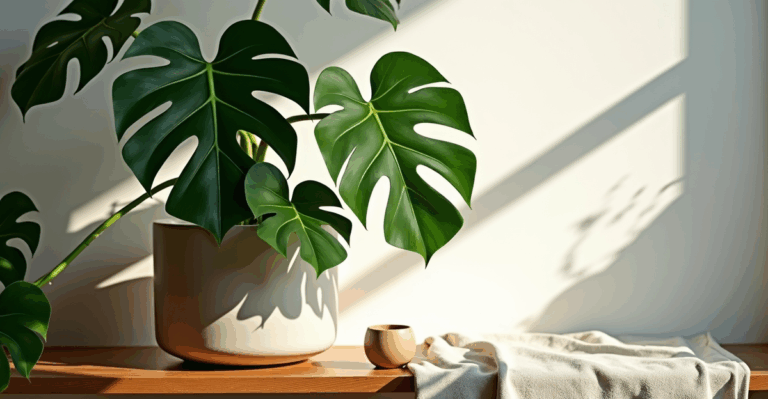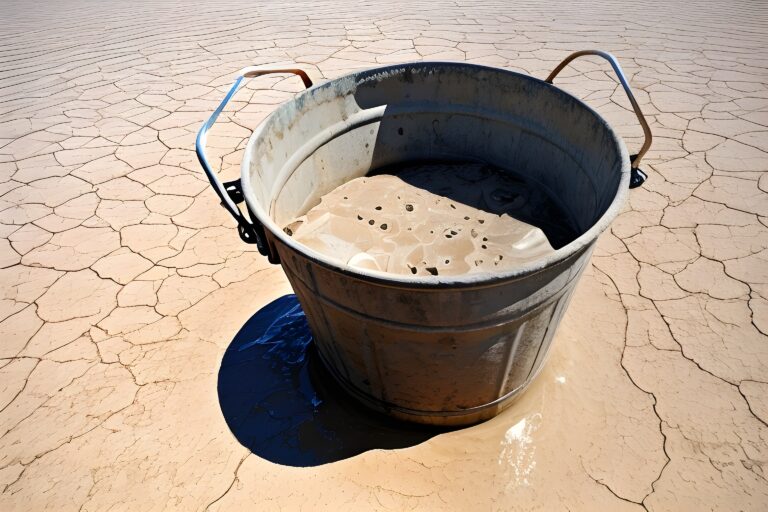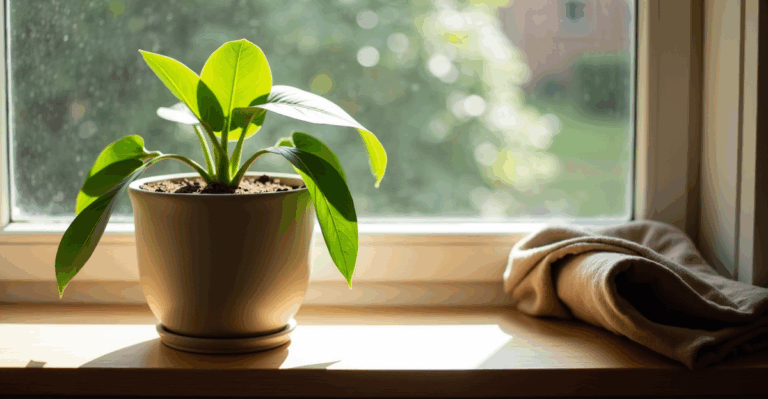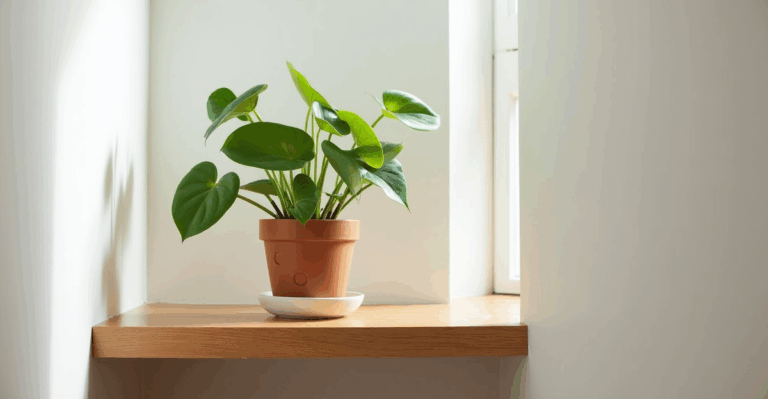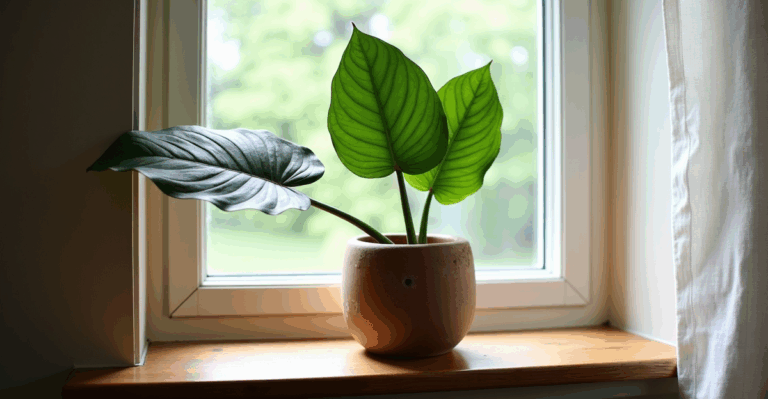Alocasia in a South-Facing Room: Drafty Window Setup That Works
We’ve all done it. You find the perfect, sun-drenched spot by the south window, place your stunning Alocasia (maybe a A. macrorrhizos or a Black Velvet), and feel a wave of satisfaction. Then winter hits. The glass turns icy, a cold breeze sneaks through the frame, and within a week, your plant’s leaves turn crispy at the edges, droop like wilted lettuce, and seem utterly confused. It’s a common heartbreak for Alocasia lovers in sunny rooms. But here’s the thing: south-facing windows aren’t the enemy—drafts are. And with a few smart tweaks, that prime light spot becomes your plant’s favorite room.
Let’s be real: Alocasias thrive on bright, indirect light. South windows deliver the most intense light of any window orientation, especially in the winter months. But that same window can also be the coldest spot in the house when the wind blows or the heating system kicks off. The cold glass and air currents don’t just stress your plant—they literally pull moisture out of the leaves, causing those telltale brown, brittle edges. It’s not about too much light; it’s about cold air hitting the plant where the light is strongest.
The good news? You don’t need to move your Alocasia to a less sunny spot (and risk leggy growth). You just need to create a buffer zone between the plant and the draft. Think of it like setting up a cozy nook in a breezy hallway. It’s simple, practical, and keeps your plant happy where it’s happiest.
Why “Bright, Indirect” Means More Than Just a Shaded Spot
The classic advice for Alocasias is “bright, indirect light.” But that’s a bit vague. For a south window, indirect means not directly on the glass. A plant pressed against cold glass gets hit by the coldest light and the most drafts. A plant 12–18 inches back? That’s where the light is still strong but the air is warmer and more stable. We’ve seen countless Alocasias bounce back within weeks just by moving them 2 feet back from the window frame. It’s not about dimming the light—it’s about warming it.
Drafts Are a Seasonal Trap (and How to Outsmart Them)
You might not even notice the draft in summer. But as temperatures drop, that tiny gap in your window frame becomes a cold air tunnel. The problem isn’t just the cold air—it’s the rapid temperature shift when the plant moves from warm indoor air to the cold glass. Alocasias hate sudden changes. They prefer steady warmth.
The fix? Place your plant well behind the window, on a shelf or table. A simple 12-inch riser (like a stack of bricks or a thick book) lifts the pot above the cold air pool near the floor. Better yet, use a plant stand with open sides to let air circulate around the plant, not into it. We’ve had Alocasias survive Chicago winters on a south-facing shelf only because they weren’t touching the glass. It’s not about sealing the room—it’s about smart placement.
Watering: When Clay, Plastic, and LECA Meet a Drafty Room
Drafts aren’t just about cold air—they also accelerate drying. Your Alocasia might feel like it needs water more often in a drafty spot, but overwatering is a bigger risk. Why? Because the plant is stressed, and stressed plants absorb water poorly. We’ve seen too many plants with soggy roots from well-meaning owners watering too frequently to “counteract” the dry air.
Here’s how we adjust:
– Clay pots: Let the top 2–3 inches dry out completely before watering (usually 5–7 days in winter). The porous clay holds moisture, but drafts speed up evaporation from the pot, not just the soil.
– Plastic pots: Water when the top inch feels dry (3–5 days). Less evaporation from the pot walls, but drafts still dry the leaves faster.
– LECA/PON: Flush weekly with distilled water to prevent mineral buildup (drafts pull minerals to the surface). Watering frequency stays similar, but don’t let the clay pellets dry out completely—they need consistent moisture.
Edge case: If you see new leaves curling inward (not just crispy edges), it’s often a sign of cold stress, not underwatering. Move the plant slightly farther from the window before adjusting water.
Styling That Works (Without the Draft)
You don’t want your Alocasia to look like it’s hiding behind a curtain. A stylish solution is to group it with other plants that tolerate similar light and draft conditions. Ferns, Calatheas, and Pothos all love bright, indirect light and will create a humid microclimate around your Alocasia. This is why shelves with open gaps (not tight boxes) work better than heavy, enclosed planters. The air can circulate freely, and the grouped plants keep each other cozy.
Pro tip: Avoid plastic cachepots with liners in drafty spots. The liner traps moisture, and drafts make the pot feel colder—increasing the risk of root rot. Instead, use a simple, open tray (like a woven mat or a thin metal saucer) to catch spills without trapping cold. For heavy Alocasias, a 3D-printed planter with integrated drainage is perfect: it’s lightweight enough to move easily, has precise drainage holes, and fits snugly on a shelf without wobbling.
When This Setup Won’t Work (And What to Do Instead)
This fix won’t save a plant in a huge draft (like a window that’s always cracked open). If you have a window that’s physically drafty all year, you’ll need to:
1. Seal the window (temporary weather stripping),
2. Move the plant to a different window (east or west-facing), or
3. Use a small greenhouse cabinet only for the coldest months (not year-round, as it limits airflow).
Also, avoid placing Alocasias directly behind other plants in a south window—this blocks light and creates a stagnant, humid zone that invites pests like spider mites. We’ve seen it happen: the plant in the back gets less light and more humidity, and suddenly it’s a pest hotel.
Your Drafty-South Window Action Plan
- Move your Alocasia 12–18 inches back from the window. A shelf at eye level works perfectly.
- Add a 2–3 inch riser (like a stack of books or a planter stand) to keep the pot above cold air near the floor.
- Water when the top 2–3 inches are dry (use a finger test!), not on a schedule.
- Group with 1–2 other humidity-loving plants on the same shelf (no plastic cachepots!).
- Check leaves weekly for new browning edges (a sign to move it slightly farther back).
Real-life example: We helped a client with an A. Polly in a south window. The leaves were turning brown from the tips down. We moved it to a shelf 2 feet back, added a wooden riser, and adjusted watering to the top 2 inches drying. In 3 weeks, the browning stopped, and new growth appeared. It looked like the plant had been waiting to thrive.
The Gentle Truth About Alocasias
Alocasias aren’t picky—they’re sensitive. They don’t want a cold draft, but they do want that bright south light. The key isn’t avoiding the window; it’s harnessing it without the cold. It’s about understanding why the plant is stressed (drafts, not light), then making a simple adjustment that works with your home’s realities—not against them.
You’ve already chosen a plant that’s bold and beautiful. Don’t let a drafty window steal its moment to shine. With just a few tweaks, that south-facing spot becomes a sanctuary—not a stress zone.
When you’re ready to grow your setup, explore our 3D-printed planters.

